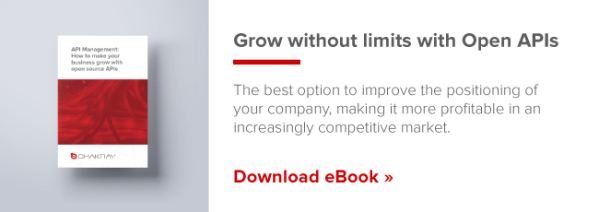WSO2 API Manager is a tool marketed by the company WSO2, which develops open software applications aimed at professional developers. WSO2 API Manager 3.0 is an application with which it is possible to manage the API end-to-end locally, in a hybrid or cloud environment. In this article we will know in depth its main features and applications.
What is WSO2 API Manager 3.0?
WSO2 API Manager 3.0 is an Apache software license version 2.0 solution, so it is free to use. It replaces WSO2 API Manager 2.6.0. and allows API developers to design, publish and manage the API lifecycle, while API product managers can generate other products.
As one of its main features, this tool hosts an application developer portal with which it is possible to build and manage a community of developers for its APIs. Its native cloud API gateway is useful for many functions. The main ones are to secure, route, manage and monitor your API traffic in a scalable way.
WSO2 API Manager is the only 100% open source product that addresses all aspects of API management including development, production, consumption, security, license restriction, monetization and API analysis.
What are the components of this tool?
WSO2 API Manager has 6 main components in its basic architecture:
- API Publisher.
- API developer Portal.
- API Gateway (now also with a Microgateway API)
- Key Manager.
- Traffic Manager. and
- API Analytics.
WSO2 API Manager is a platform for creating, managing, consuming and monitoring APIs that uses proven SOA best practices to solve a wide range of API management challenges such as API provisioning, control, security and API monitoring. It has some of the most powerful and evolved components of the WSO2 Carbon middleware platform to provide a seamless and comprehensive API management experience, while meeting the requirements of both the creator and manager of the API and the user.
What’s new in the latest version of WSO2 API Manager
The WSO2 API Manager 3.0 incorporates the following new features and improvements:
- Monetization of the API. WSO2 API Manager provides support for API monetization from the start. Thus, it is possible to integrate with any third-party billing engine using the pluggable extension points in the WSO2 API Manager.
- JWT authentication. JWT authentication allows users to use self-contained tokens when running the APIs. When an API is secured using the OAuth2 security scheme, the JWT tokens that are issued to users from the Developer Portal can be used to execute APIs.
- API Schema Validator. The WSO2 API administrator allows users to use their Open API definitions and apply request and response validations without any additional work, such as implementing custom mediations.
- GraphQL API support. Users can use Schema Definition Language (SDL) to design GraphQL APIs in the WSO2 API Manager. This allows users of the API Manager to manage their GraphQL services as an API.
- Bot Detection. The bot detection capability in WSO2 API Manager is based on scanning of content and integrated services. Administrative users are notified via email of such potentially problematic API threats, whether carried out by bots or other attackers.
- API Product. API Product allows users to integrate multiple APIs and expose them as a single product. This makes it possible to package different services in different ways and display them as separate products.
- API Key. WSO2 API Manager allows users to use a standalone token as an API key. An API key is the simplest form of application-based security that a user can configure through WSO2 API Manager’s Developer Portal (API Store). The gateway will validate the API key before allowing resources to be consumed.
In addition to the new features offered by WSO2 API Manager 3.0, there have been a number of improvements to some of the features already available in the previous version.
An example of this is the renewed UI; now the Publisher Portal and the Developer Portal have been completely redesigned using ReactJS to improve the user experience.
The search by tags has also been improved, and a new configuration model is presented. Until version 2.6.0 of the WSO2 API Manager, users had to update various configuration files to set up the product. This overhead is eliminated with the new configuration model because users now only have to update a single file (deployment.toml).
Until the previous version of the WSO2 API Manager, users had to update several configuration files to set up the product, which could lead to some overhead which is now removed. This is because, with the new configuration model of this new version, users only have to update a single file (deployment.toml).








